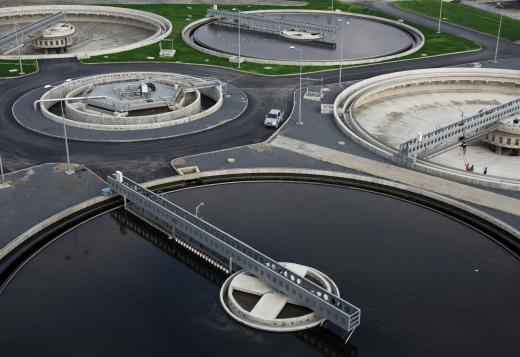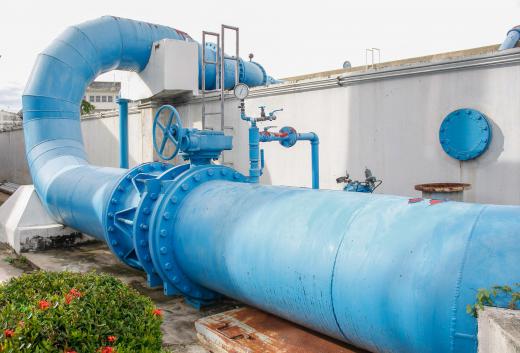What is Wastewater Treatment?
Wastewater treatment is the process of taking wastewater and making it suitable for discharge back into the environment. Wastewater can be formed by a variety of activities, including washing, bathing, and using the toilet. Rainwater runoff is also considered wastewater. No matter where it comes from, this water is full of bacteria, chemicals, and other contaminants. Wastewater treatment reduces the contaminants to acceptable levels so as to be safe for discharge into the environment.
In general use, there are two types of wastewater treatment systems: a biological treatment plant and a physical/chemical treatment plant. Most households and businesses create waste that can be broken down by natural means. Biological treatment plants use bacteria and other biological matter to break down waste. Industrial wastewater can contain chemicals that can harm the environment, so a chemical plant is needed to treat this waste. Physical/chemical wastewater treatment plants use both physical processes and chemical reactions to treat wastewater.

A biological wastewater treatment plant, such as a municipal treatment plant, uses several tanks to treat the wastewater that comes into it. First, wastewater is screened to eliminate easily removed objects, some of which could ruin the treatment plant’s machinery. Next the wastewater is taken to a primary settling basin where matter can float or sink in the tank. The remaining water is then sent to the secondary treatment tank where biological matter, such as bacteria, removes much of the remaining suspended matter.

The substances that are removed during water treatment are called sludge. This sludge is treated and can be used as fertilizer or in land reclamation, or will be sent for land filling or incineration. To treat sludge, waste management professionals may use anaerobic digestion, aerobic digestion, or composting. The difference between anaerobic and aerobic digestion is that aerobic digestions happens in the presence of oxygen where as anaerobic digestion does not. In composting, sludge is mixed with carbon before being introduced to the bacteria for digesting.

After the secondary treatment, water is then sent through tertiary treatment. This treatment is the last stage before water can be released into the environment and usually ends with a disinfecting step. This step is actually a chemical treatment in a biological treatment setting. The treated water, called effluent, is then disposed of in the environment. This reclaimed water can also be used in fountains and to water lawns.

Physical/chemical wastewater treatment starts with removing suspended solids from the wastewater. The water is pumped into large tanks where matter settles or sinks, just like in a biological treatment plant. Just like in a biological treatment plant, this process may be aided by stirrers that mix the water up causing small particles to join into bigger particles. In a physical/chemical plant, this process can also be further aided by the addition of flocculants, a chemical that forms larger particles. Dissolved air may also be used to aid in the removal of particles.
Chemical processes include added chemicals to precipitate dissolved materials. Chemicals like chlorine may also be used to convert cyanides into carbon dioxide and nitrogen. Organic chemicals can also be oxidized by adding ozone or hydrogen peroxide. Chemicals in wastewater can also be broken down by using ultraviolet light. Municipal treatment plants may also use chemical treatments to remove materials such as phosphorus from wastewater.
AS FEATURED ON:
AS FEATURED ON:














Discussion Comments
Wastewater treatment reduces the bacteria, chemicals and other contaminants to acceptable levels so as to be safe for discharge into the environment.
Effective management and treatment of wastewater is critical to maintaining public health and a clean, safe environment.
My husband works at a waste water treatment plant. They actually have levels of treatment to determine how clean the water is and how it should be reintroduced to the environment.
Although none if it is ever used on farmland for food that reaches us directly, some of the treated water is considered clean enough for wheat fields. I am not sure how I feel about that. My husband swears it is safe. Anyone else have any thoughts? The wheat does at some point end up on our tables after all.
This has been very helpful and its so easy to understand.. Great job wiseGEEK!
Post your comments